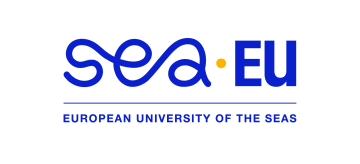Research on oenology issues begins with the doctoral thesis on wine tasting, applying chromatographic techniques that were new at the time. He establishes collaboration agreements with a large number of wineries, tackling problem-solving studies, including several doctoral theses. It obtains funding in competitive calls, which allows it to expand the lines of research in viticulture, as well as achieve scientific infrastructure that allows it to extend the lines of research to the agri-food field in general. It develops analytical methodologies applying very new techniques, such as electronic nose, olfactometers, etc. In the extension of research lines, it studies the compounds of interest in wine remains, as a consequence of this line, it creates a spin-off (LABORATORIOS SKINWINE S.L.) that is dedicated to the elaboration of cosmetic products from the remains of the vinification and aging of sherry wines. Likewise, the remains and finished wine products are reused to make new foods, creating another company (ALIWINE S.L.). As for management, he has been Director of the Andalusian Centre for Viticultural Research (CAIV) since its creation (1999) and is currently Director of the University Institute for Viticultural and Agro-food Research (IVAGRO) since its creation (2016). He is currently President of the Association of Oenological Research Groups (GIENOL) since its creation (2000). He has been coordinator of the Inter-University Doctorate Programme in Oenology, Coordinator of the Inter-University Master/Doctorate in Viticulture in Warm Climates and the Agro-Food Programme. He has been Director of the OTRI. Responsible for a large number of requests for scientific infrastructure with several research groups, achieving a high percentage of approval, so that they have been provided with equipment for common use, both in laboratory instrumentation, as in pilot plants.
ANALYSIS OF POLYPHENOLS, AROMAS AND OTHER PARAMETERS IN GRAPES, MUSTS, WINES, VINEGARS, BRANDY, LIQUORS AND AGRI-FOOD PRODUCTS.
- Sensory analysis of agri-food products and studies with consumers.
- Characterization of fire residues and flammable liquids using spectroscopic techniques
CHARACTERIZATION AND DIFFERENTIATION OF WINE AND AGRI-FOOD PRODUCTS AND THEIR RELATIONSHIP TO QUALITY
- Production of food products from wine products
- Optimized aging of wines, distillates and vinegars.
- Study of adulterations in agri-food products (honeys, oils, jams, extracts¿).
STUDY OF COMPONENTS PRESENT IN WINE AND AGRI-FOOD PRODUCTS BENEFICIAL TO HEALTH
- Study of the conservation of technological and artisanal wine heritage (Campus of International Excellence in Cultural and Natural Heritage)
- Re-use of wine and agri-food waste for various purposes (cosmetics, dietetics, preservatives, etc.)
The research of this group initially concentrated on wine growing and over time it has been opened up to agri-food in general. Its strength lies in its analytical potential, developing methodologies that are being used by the entire oenological and agri-food scientific community (UPLC-MS, GS-MS, electronic nose, etc.). It has also designed prototypes for sample preparation (microwaves, etc.), as well as process optimization (ultrasound, micro-oxygenation, de-alcoholization, etc.). Multiple research projects have been developed and achieved in various competitive public calls. The scientific productivity of the group has been maintained at a high level over time. Practically 70% of all the group's research activity is applied and therefore in collaboration with institutions and companies. Numerous R+D+i contracts have been established, as well as collaborative R+D+i projects with companies and/or consortiums of companies. A large number of patents, analyses, processes and technological prototypes have been presented. The training capacity of the group is acceptable, with a high number of doctoral theses, highlighting that several have been developed in collaboration with companies. There is a high degree of collaboration with other research groups from the university itself and from other regional, national and international universities. As a result of this research, two spin-off or technology-based companies have been created.
Sanchez-Guilien, M. M.; Schwarz-Rodriguez, M.; Rodriguez-Dodero, M. C.; Garcia-Moreno, M., V; Guillen-Sanchez, D. A.; Garcia-Barroso, C.
FOOD CHEMISTRY (2019) Vol: 286. Pgs: 275-281
2. Characterization of petroleum-based products in water samples by HS-MS
Ferreiro-González, M., Aliaño-González; M.J., Barbero, G.F., Palma, M., Barroso, C.G.
Fuel, 222, 506-512 (2018)
Ferreiro-González, M., Ruiz-Rodríguez, A., Barbero, G.F., Ayuso, J., Álvarez, J.A., Palma, M., Barroso, C.G.
Food Chemistry, 277, 6-11, 2019
Widiastuti Setyaningsih, Irfan E. Saputro, Ceferino A. Carrera, Miguel Palma.
Food Chemistry, 288, 221-227 (2019).
M. Jesús Cejudo-Bastante, Enrique Durán Guerrero, Remedios Castro Mejías, Ramón Natera Marín, M. Carmen Rodríguez Dodero, Carmelo García Barroso.
Journal of Agricultural and Food Chemistry, 58, 11814-11820 (2010)
